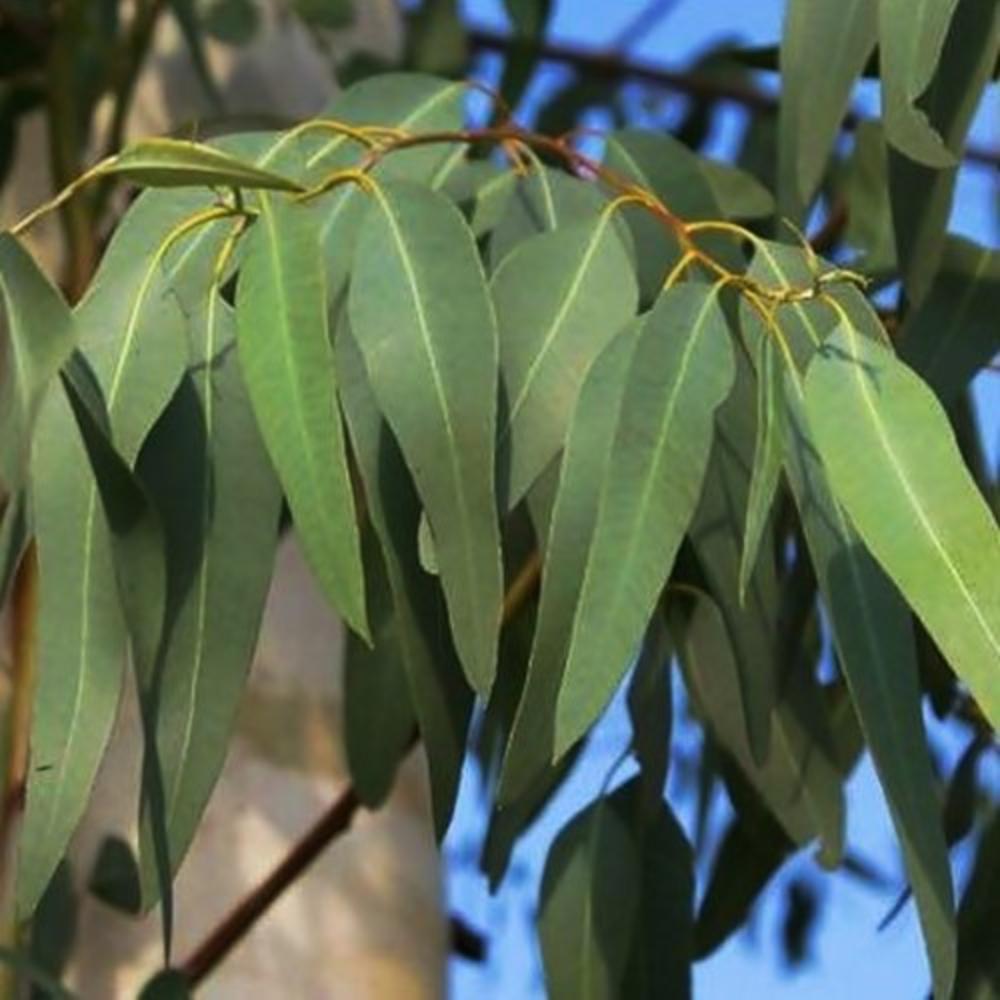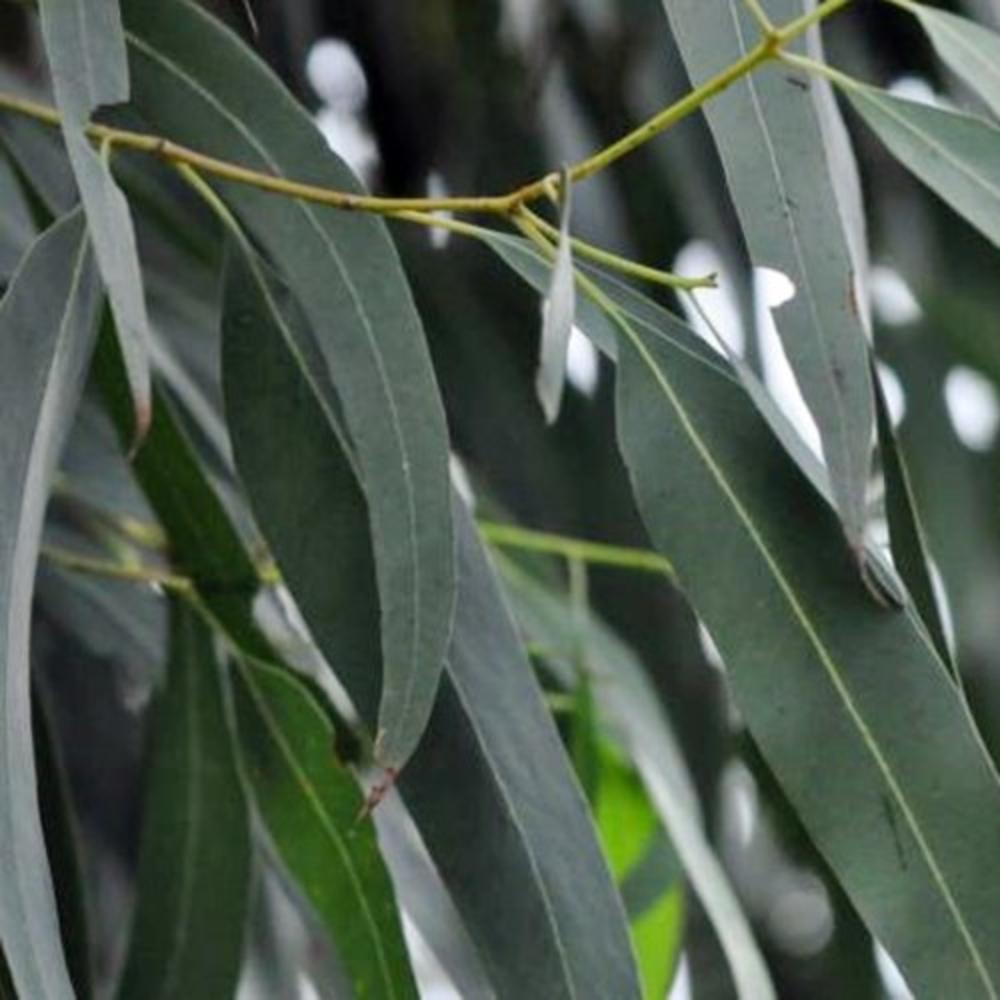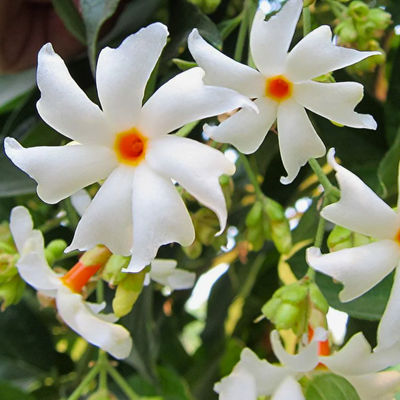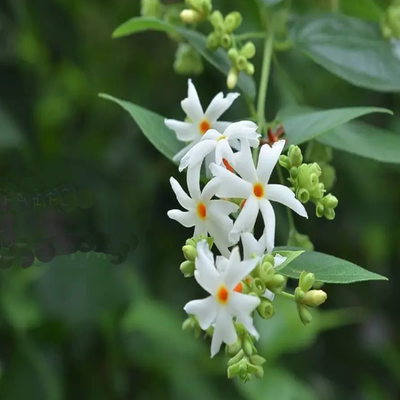

Green Paradise Offers Healthy
Nilgiri (Eucalyptus globulus) Plant
Nilgiri is a large genus of flowering trees and shrubs in the Myrtaceae family. There are over 700 recognized species of eucalyptus, with the majority native to Australia, but some are also found in neighboring countries such as New Guinea, Indonesia, and the Philippines. The name "eucalyptus" comes from the Greek words "eu," meaning well, and "Kryptos," meaning covered, refers to the cap that covers the flower bud.
Key features of Nilgiri plants include:
Appearance:
-
Nilgiri trees typically have smooth, mottled, or peeling bark, which can vary in color from white and gray to various shades of brown, red, or green.
-
The leaves are lance-shaped and often hang vertically to reduce water loss, a feature known as "drought adaptation."
-
The flowers are usually small and have numerous stamens.
Aromatic oils:
-
Nilgiri leaves contain essential oils, which give off a distinct and refreshing fragrance.
-
These oils are known for their antiseptic properties and are often used in various medicinal and industrial applications.
Fast growth:
-
Nilgiri trees are renowned for their rapid growth rates.
-
Some species can reach significant heights in a relatively short period, making them valuable for commercial timber production and reforestation efforts.
Adaptability:
-
Nilgiri trees are remarkably adaptable to different environments, from rainforests to arid regions.
-
They have evolved to tolerate a wide range of soil types and climatic conditions.
Economic and ecological importance:
-
Nilgiri species have immense economic value, especially in the timber and pulpwood industries.
-
They are also cultivated for the extraction of essential oils, which have applications in medicine, aromatherapy, and perfumery.
-
Additionally, eucalyptus forests can provide important habitat for various wildlife species.
Fire-adapted species:
-
Many Nilgiri species have adapted to survive and even thrive in fire-prone environments.
-
Some possess specialized features like lignotubers (swollen, woody structures at the base of the trunk) or serotinous seed capsules (fire-activated seed release) that allow them to regenerate after fires.
Medicinal uses:
-
Nilgiri oil has been used for its medicinal properties for centuries.
-
It is often used to alleviate respiratory problems and is a common ingredient in cough drops, decongestants, and inhalants.
-
The oil can also have antifungal and antimicrobial properties.
Despite their many benefits, eucalyptus trees have been introduced to various regions outside of their native range, where they can become invasive and outcompete native vegetation due to their fast growth and ability to deplete water resources. As such, the cultivation and management of the Nilgiri Plant require careful consideration of potential environmental impacts.
Plant Specifications
-
*above specification are indicative only. actual dimensions may vary by +-10%Plant Height 20-30cm -
Common Name Nilgiri, Rainbow Eucalyptus, Maximum Reachable Height 1.5 to 2 feet Difficulty Level Easy to grow
How To Grow Nilgiri Plant
Growing a Nilgiri plant can be a rewarding and relatively easy process. Nilgiri plants are native to Australia, but they can also be grown in other regions with a similar climate.
Here's a step-by-step guide on how to grow a Nilgiri plant:
Choose the Right Species:
-
There are over 700 species of Nilgiri, so choose one that is well-suited for your climate.
-
Some common species that can adapt to various climates include Nilgiri globulus (Tasmanian Blue Gum), Nilgiri gunnii (Cider Gum), and Nilgiri citriodora (Lemon Eucalyptus).
Climate and Sunlight:
-
Nilgiri plants thrive in full sunlight and require a warm climate.
-
Ensure they receive at least 6-8 hours of direct sunlight daily.
-
If you live in a colder climate, consider growing Nilgiri in containers, so you can move them indoors during the colder months.
Soil Preparation:
-
Nilgiri plants prefer well-draining soil.
-
Prepare the soil by adding organic matter similar as compost to ameliorate its fertility and drainage.
-
The pH level should be around neutral (6.0 to 7.5).
Planting:
-
If you're growing from seeds, sow them in spring or early summer.
-
Cover the seeds lightly with soil and keep the soil consistently moist until they germinate.
-
Alternatively, you can buy small Nilgiri plants from a nursery and transplant them into your garden or a suitable container.
Watering:
-
Nilgiri plants generally prefer moderate watering, especially during dry spells.
-
Once established, they are somewhat drought-tolerant.
-
However, avoid waterlogged soil as they don't like sitting in water for extended periods.
Mulching:
-
Apply a layer of organic mulch around the base of the plant to retain moisture, control weeds, and regulate soil temperature.
Pruning:
-
Regularly prune your eucalyptus plant to maintain its shape and encourage bushier growth.
-
Pruning is best done in the spring and early summer.
Pests and Diseases:
-
Nilgiri plants are relatively pest and disease resistant.
-
However, keep an eye out for common garden pests like aphids and scale insects, as well as fungal diseases.
-
still, take applicable measures to address them instantly, If you notice any issues.
Fertilization:
-
Nilgiri plants generally don't require heavy fertilization.
-
A balanced, slow-release fertilizer applied in the spring should be sufficient.
-
Avoid over-fertilizing, as inordinate nutrients can lead to weak growth.
Container Growing:
-
If you live in a colder climate or don't have suitable garden space, you can grow Nilgiri in containers.
-
Ensure the containers have good drainage holes, and use a well-draining potting mix.
-
Keep the plants outdoors during the warmer months and move them indoors to a sunny location during the colder months.
Remember that some Nilgiri species can grow quite large, so consider the mature size of the plant when choosing the location for planting. Also, be mindful of local regulations regarding planting non-native species, as some Nilgiri varieties may be invasive in certain areas.
Planting And Caring
Planting and caring for a Nilgiri plant can be a rewarding experience, as these trees are not only beautiful but also have a pleasant fragrance and various practical uses.
Here are some steps to help you successfully plant and care for a eucalyptus plant:
Choose the Right Variety:
-
There are many different species of eucalyptus, so choose one that is suitable for your climate and space.
-
Some common varieties include Eucalyptus globulus (Tasmanian blue gum) and Eucalyptus cinerea (silver dollar eucalyptus).
Select a Suitable Location:
-
Eucalyptus plants prefer full sun and well-drained soil.
-
Ensure that the location you choose receives at least 6-8 hours of sunlight each day.
-
The soil should be moderately fertile and not prone to waterlogging.
Planting:
-
The best time to plant eucalyptus is in spring or early summer when the soil is warm.
-
Make a hole somewhat larger than the root ball of the plant.
-
Place the plant in the hole and backfill it with soil, gently firming it down.
-
Water thoroughly after planting.
Watering:
-
While eucalyptus trees are relatively drought-tolerant once established, they require regular watering during the first couple of years to help establish their root system.
-
After that, you can rely on natural rainfall in most cases.
-
Water deeply but rarely, allowing the soil to dry out between waterings.
Mulching:
-
Applying a layer of mulch around the base of the eucalyptus tree helps retain soil moisture, suppress weeds, and protect the roots from extreme temperatures.
-
Use organic mulch similar to wood chips or straw.
Pruning:
-
Eucalyptus plants can grow rapidly, so occasional pruning may be necessary to maintain shape and size.
-
Prune in late winter or early spring to avoid stressing the tree.
-
Remove any dead or diseased branches and consider thinning the canopy to allow better air circulation.
Fertilizing:
-
In most cases, eucalyptus trees do not require regular fertilization, especially if they are planted in good soil.
-
However, if you notice slow growth or nutrient deficiencies, you can apply a balanced fertilizer in early spring.
Pest and Disease Control:
-
Eucalyptus plants are generally resistant to pests and diseases, but they can still face issues like leaf-chewing insects or fungal problems.
-
Regularly inspect your tree for any signs of infestation or disease and take appropriate measures if necessary.
Winter Protection:
-
Young eucalyptus plants may need some protection during very cold winters.
-
Consider wrapping the trunk with burlap or providing some shelter from harsh winds.
Harvesting:
-
If you're growing eucalyptus for its leaves, wait until the plant is well-established before harvesting.
-
To harvest, snip the leaves from the outer growth to encourage bushier growth.
Remember that Nilgiri trees can grow large and tall, so make sure you have enough space for their mature size. Additionally, some species of Nilgiri are considered invasive in certain areas, so be sure to check local regulations before planting. Overall, with proper care, your Nilgiri plant can thrive and provide you with its many benefits.


















